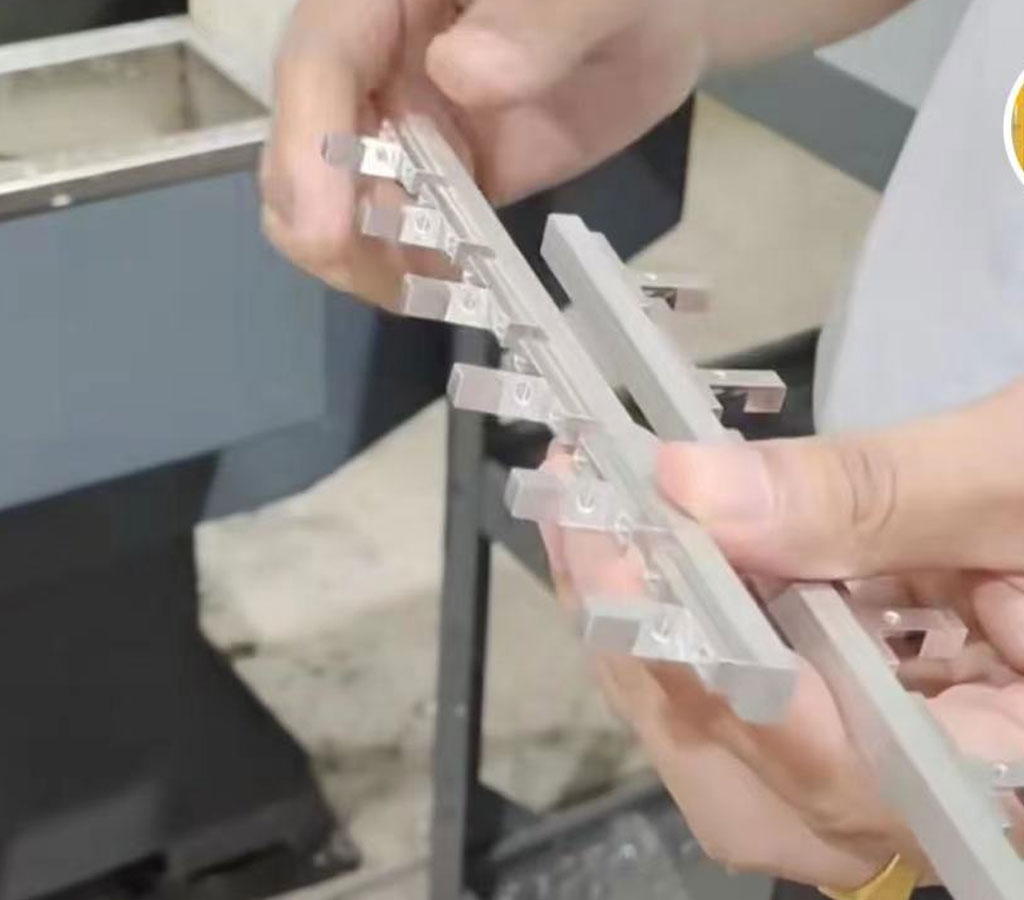At present, some enterprises that undertake a single variety and a large number of foreign trade orders have poor ability to withstand the impact of the international financial crisis. Relevant enterprises urgently need to adjust the industrial structure, seek new and diverse production varieties, promote production transformation, and gain new vitality. Faced with this situation, how can China’s optoelectronic information industry turn the crisis into an opportunity? What are the top priorities for the industry? I think we should focus on hot industries and hot topics, deal with difficulties, make breakthroughs in key areas, and seek new developments in new industries.
So, what are the current hot spots of optical machining in China? My opinion is four words: small, big, hard, fine.
1 “Small” – miniaturized optical components

Miniature optical components include small lenses, small aspheric lenses (glass and plastic materials), tiny prisms, tiny plane mirrors, lens array plates, prism array plates, etc.
In recent years, the photoelectric information industry has developed rapidly, the IT industry has risen rapidly, the demand for digital cameras, projectors, digital scanners, optical communication optical components and other products has gradually increased, and the models are developing towards miniaturization, forming a huge emerging industry—— ——Micro optics industry.
The product design and software of China’s optoelectronic information industry are not far behind the international level, but the gap is greater in the level of materials, technology and manufacturing. We should increase investment in these three areas and focus on research. Among them, the hem machining process of the small lens and the injection molding process of the imaging plastic aspheric lens should be the top priority.
1.1 The hem machining process of the small lens
Large and medium spherical lenses are usually ground and polished with quasi-spherical centers, that is, polished around the approximate spherical center. From the dynamic analysis, this technology has the phenomenon of uneven pressure distribution and poor machining quality stability. The hem machining of the small spherical surface is essentially a single-piece machining of fine grinding and polishing movements around the precise center of the ball. The machining specific pressure is high, the machining speed is fast, the quality is high, and the stability is good.
The upper shaft of the bottom pendulum machine only moves downward, strictly intersects with the lower shaft and the lower shaft rotation axis at one point, thus ensuring that the lower shaft can swing precisely, with an accuracy of 0.01 mm, and will not change with the wear of the lens surface. During machining, the thickness of the lens can be read from the dial indicator with an accuracy of ±0.01 mm. It takes about 2 minutes to finely grind and polish one side of the lens with a diameter of 7 mm by using the bottom-swing machine, and the machining speed is much faster than that of the top-swing machine.
1.2 Injection molding process of imaging plastic aspheric lens
The production process of plastic aspheric injection molding for lighting and light concentrating in China is relatively mature, and there are also many diamond lathes for making mold cores. At the same time, the demand for plastic aspheric surfaces is also increasing, such as digital camera lenses, digital Plastic aspheric lenses are used in scanning lenses, etc. However, there are not many plastic aspheric lenses that pass the quality standard. As long as we seriously study the measurement methods of aspheric surface shape, such as the Formtalysurf profiler in the UK, the sub-aperture interferometer and the ring-band interferometer in the US, etc., this process can be broken through.
2 “Large” – large glass planes, large lenses and large aspheric mirrors
TV LCD screen or plasma screen, “Shenguang III”, aerial photography lens, space camera, lithography lens, large sky area multi-objective fiber optic spectroscopic telescope (LAMOST) and 20 m adaptive optics astronomical telescope that may be manufactured in the future There are many large glass planes and large mirrors with high requirements.
In response to these fields, many units in China have introduced large-scale plane, spherical and aspherical CNC machine tools. For example, the Nanjing Astronomical Instrument Development Center has introduced a 3.2 m ring polishing machine from the United States; the Chengdu Precision Optical Engineering Center has introduced a Russian 500 mm large flat diamond fly-cut milling machine and multiple three-axis, four-axis and five-axis CNC optical grinding machines; The Shanghai Hyundai Advanced Ultra-Precision Manufacturing Center is introducing a series of 400 mm ultra-finishing and inspection optical flat, spherical and aspherical equipment, which are all necessary equipment for manufacturing large optical components.
In addition, China has also successively carried out the research and development of large-scale plane, spherical and aspherical CNC machine tools. For example, the 4 m active precision CNC ring polishing machine successfully developed by Nanjing Lisheng Optical Machinery Co., Ltd. is currently the largest polishing machine in China; Harbin Institute of Technology has developed a 600 mm crystal ultra-precision diamond fly-cutting plane milling machine and a 600 mm aspheric surface super-finishing machine tool ; The Aerospace 303 Institute developed the Nanosys 300 aspheric machine; Norsteg developed the PPS 100 high-precision planar optical CNC machining and fast polishing machine. It is worth mentioning that the development of the first domestic 500 mm ion beam machining equipment at the National University of Defense Technology has also made great progress, providing conditions for the manufacture of ultra-precision large optical components. The development of large-scale precision optical components and optical mirrors or optical lenses in China is mainly carried out in research institutes and colleges. For example, Chengdu Precision Optical Engineering Center, Changchun Institute of Optics and Mechanics, Chengdu Institute of Optoelectronics, Shanghai Institute of Optics and Mechanics, the 45th Institute of Electronics of the Ministry of Information Industry, Nanjing Astronomical Instrument Development Center, National University of Defense Technology, Soochow University and Zhejiang University, etc.
Even so, China’s current large precision optical components, mirrors and optical lenses still cannot meet the needs. For example, the space camera in the “Shenzhen V” manned satellite uses a Russian-made silicon carbide mirror. In addition, the Chinese lithography lens has not reached the international level, and still requires a large investment.
3 “hard” – hard optical crystal
Silicon carbide (SiC) has a Mohs hardness of 9.5, low density and low expansion coefficient. It is an isotropic hexagonal crystal and is an emerging aerospace optical material. The Mohs hardness of sapphire/ruby (Al2O3) is 9. It is an anisotropic hexagonal crystal and is a precious optical material. Ruby is a solid-state laser light-emitting material, sapphire and ruby are infrared window materials, and sapphire is also a good substrate material. Sapphire has a high refractive index, high hardness, and bright colors. It is also a precious ornament and a high-grade surface material that “never wears out”. Nd-doped yttrium aluminum garnet (YAG) has a Mohs hardness of 8~8.5 and is a near-infrared solid-state laser material. The Mohs hardness of quartz crystal (SiO2) is 7. It is an anisotropic hexagonal crystal and is a high-quality optical material in the ultraviolet and infrared fields. At present, the most popular is the optical machining of silicon carbide and red and sapphire.
The melting, surface modification and optical machining of SiO2 materials are still in the development and research stage in China. The Shanghai Institute of Ceramics, Xi’an Institute of Optics and Mechanics, Shanghai Institute of Technology and Nanjing Institute of Astronomical Optics Technology have made gratifying progress in their research. At present, China has developed a SiO2 imaging aspheric mirror with a diameter of 520 mm, and is developing towards a diameter of 800 mm.
Sapphire has high hardness, special machining methods, and many innovations in process methods, focusing on fine grinding and polishing. Abrasives and polishing materials can use diamond grinding paste or diamond powder, the particle size is w1, w0.5, w0.25, or even more; diamond powder can also be used to polish the leather. Grinding and polishing molds can be steel molds, diamond molds, resin copper molds or gemstone molds. In addition, SiO2 chemical polishing fluid can also achieve good results.
4 “fine” – ultra-fine optical lens or optical element
4.1 Ultra-precision optical surface machining technology
Optical surfaces have higher and higher requirements for surface shape accuracy and surface roughness, and optical lenses (ultraviolet lithography lenses, etc.) also need to have imaging quality close to the diffraction limit. These have prompted the emergence of a number of new machining technologies in ultra-finishing. And methods, including: computer numerical control small tool optical surface machining (CCOS), magnetorheological polishing (MRF) technology and ion beam polishing (IBF) technology. In the 1980s, China began to study CCOS, and now the technology has matured; in the 1990s, China began to study MRF technology, and now it has made great progress. In recent years, the US company QED Technologies has also begun to provide MRF technology and equipment. At the same time, the National University of Defense Technology also used IBF technology to modify the optical surface, and the roughness reached 1 nm.
The digital wave surface interferometer is the main instrument for detecting surface shape accuracy. China completed the development of the first prototype in 1985. In recent years, Nanjing University of Science and Technology has developed a small spherical interferometer, which is low in cost, easy to use, and has a high market share. They have recently developed an infrared interferometer with a diameter of 600 mm for “Shenguang III”. In terms of measuring the aspheric surface shape, the sub-aperture interferometry and the ring-band method have been proposed abroad, and the plane, spherical or aspheric surface can be directly measured with an interferometer.
4.2 Ultra-precision calibration technology of ultra-precision optical lens
Ultra-precise optical setup is another important guarantee for the production of optical lenses close to the diffraction limit. The special vertical calibration lathe for ultra-precision centering is the key to ultra-precision optical calibration.
The earliest calibration instrument in China is a precision centering calibration instrument with a diameter of 500 mm produced by Chengdu Optoelectronics. The main shaft of the instrument is an ultra-precision bearing structure, and the radial runout and axial runout both reach 1μm. At present, the radial runout of the hydrostatic bearing in this kind of centering machine tool abroad has reached 0.1 μm, and the radial runout of the air bearing has reached 0.05 μm.
The ultra-fine optical alignment is based on the main shaft of the machine tool, and the spherical centers of all lenses are placed on the main shaft of the machine tool, so as to achieve the ultra-fine alignment based on the optical axis. It can also be adjusted according to the lens imaging requirements during the calibration process. Ultra-precision lenses are the highest requirements for optical lenses, and typical representatives are ultraviolet lithography lenses, interferometer standard lenses, telescope calibration lenses, and space cameras.
The recent development of 193 nm extreme ultraviolet lithography lens in China has brought great challenges to optical design, optical machining and optical assembly. According to preliminary estimates, more than 30 lenses are required to complete the given design specifications of the lens, and the optical materials used are mainly hard quartz glass and soft calcium fluoride (CaF2) crystals. Obviously, the surface of this material should be ultra-smooth, the surface shape is ultra-precision, and the machining is very difficult, and the optical adjustment is self-evident. The Key Laboratory of Modern Optical Instruments of Zhejiang University successfully developed a large-area projection lithography objective lens a few years ago. Its technical indicators are: the clear aperture is 280 mm, the numerical aperture NA is 0.08, the exposure wavelength is 365 nm, and the depth of field is 0.25 μm. The linear field of view is 203.2 mm, and the resolution is less than or equal to 2.5 μm (theoretical limit value). The manufacturing technology of this type of ultra-high-precision objective lens is also a hot issue that is generally concerned in the optoelectronic industry.
5 Conclusion
In response to the international financial crisis, China’s optoelectronic information industry should adjust the industrial structure of the enterprise, aiming at the hot issues of optical technology, combined with the actual situation of the enterprise, select breakthrough points from the four aspects of “small, large, hard, and refined”, and cultivate a new GDP growth point to minimize the negative impact of the international financial crisis.
Link to this article:Optical Machining Technology in China
Reprint Statement: If there are no special instructions, all articles on this site are original. Please indicate the source for reprinting:Mold Wiki,Thanks!^^


